What applies to mineral fertilizers, their classification, composition, application

To grow any plant crops, it is necessary to add fertilizing and fertilizers. They are usually divided into organic and mineral. Mineral nutrient mixtures usually contain metals and their salts.
They can also be complex and simple. Only thanks to their application can we get a wonderful harvest grown on our own plot. Let's figure out what belongs to mineral fertilizers and learn the rules for their use.
Content:
- What chemical industry products are classified as mineral fertilizers?
- Classification of mineral fertilizers, types
- Advantages and disadvantages of use
- Complex mineral fertilizers
- What are the advantages of complex mineral fertilizers
Which chemical industry products are classified as mineral fertilizers?
Mineral fertilizers - these are inorganic compounds enriched with useful substances intended to provide plants with the elements necessary for their growth and development. They include all kinds of substances, mainly in the form of mineral salts.
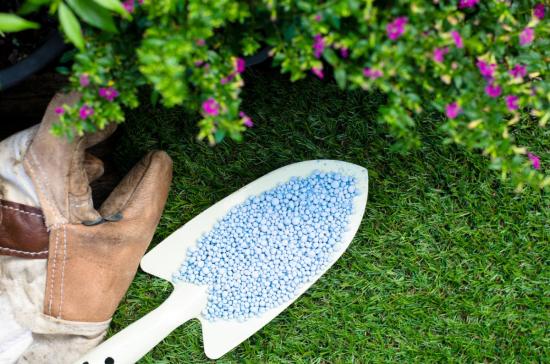
Depending on the composition of useful compounds, they are usually divided into complex and simple.
Multilateral, or complex, contain several main components, while unilateral, or simple, contain only one substance.
Usually the soil contains most of the things necessary for growth and fruiting micro and macroelements, however, there are often cases when the lack of certain substances negatively affects the development of cultivated plants.
This phenomenon is often due to the type of soil, for example:
- sandy most often contains little magnesium
- peat – molybdenum
- chernozem - manganese
Classification of mineral fertilizers, their types
This category of fertilizers is divided:
- according to the content of nutrients present in the composition: simple - containing one macroelement - nitrogen, phosphorus, potassium and complex, which simultaneously include several macroelements, the amount of which is usually expressed as a percentage, for example: potassium - 18%, phosphorus - 14%, nitrogen - 26%;
- according to the state of aggregation. Can be solid, liquid or gaseous. In addition, solids are divided into granular, crystalline, and powdery;
- by volume of active components - low up to 25%, medium up to 60% and high concentration over 60%.
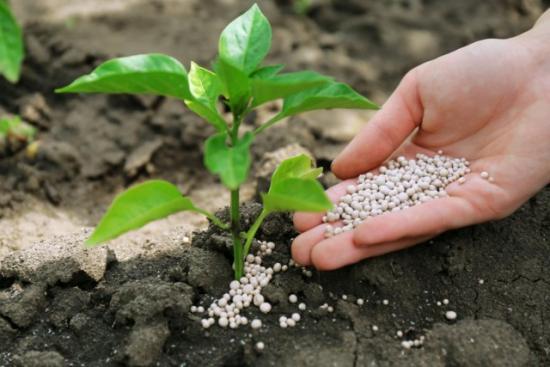
Nitrogen
Fertilizers of this type are necessary for plants to synthesize vitamins and chlorophyll. A lack of nitrogen is manifested by the loss of foliage of intense color. They lighten, the shoots stop growing, the leaves become smaller.
During the growing season, plants absorb nitrogen unevenly. During this period they need a lot of nitrogen. Excess of this element during drought causes damage to plants.
Lack of nitrogen leads to a decrease frost resistance, and excess in the fall helps to prolong the growing season, which harms the plants.
The use of nutrient mixtures of mineral origin, with a high nitrogen content, promotes the development of foliage and stems in plants, which is very important in the spring.
The ability to easily dissolve allows them to be used for spraying plants or applying granules directly to soil.
Nitrogen-containing fertilizers are classified into:
- nitrate - which are sodium or calcium nitrate, which are used to enrich them with useful substances acidic soils, are well suited for plants with short ripening periods - salads, radishes. Excess active substances accumulate inside the fruit;
- ammonium - ammonium sulfate - is applied in the fall, and in the spring onions can be planted in these beds, cucumbers, tomatoes - the result will be excellent.
Farmers and private owners often use fertilizers of the following types:
- amide - urea - contains the most nitrogen in its composition and helps increase productivity. Requires application to the soil. It is useful to treat tomatoes with it during growth and fruit set;
- ammonium nitrate – ammonia saltpeter – with the addition of potassium and phosphorus, they increase the yield of grains and root crops, especially beets and potatoes.
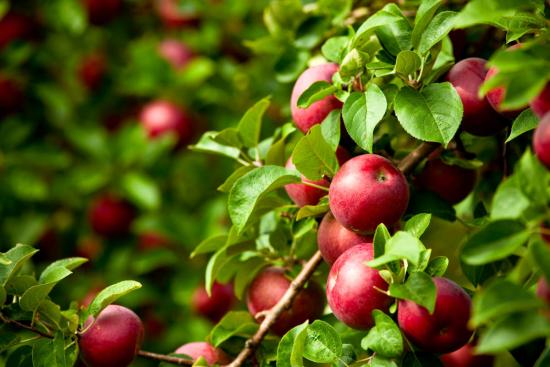
Potash
This type of fertilizer is made from the mineral sylvinite. Potassium ensures the movement of carbohydrates and promotes the absorption of carbon dioxide from the air. With a lack of potassium, resistance to disease decreases.
To increase plant immunity, improve taste, and increase the shelf life of fruits, potassium is needed. The most commonly used is potassium chloride, which is of natural origin. It is produced from ore.
The composition contains chlorine ions, which are harmful to some types of plants.To avoid negative effects, it is used in the fall.
Has a positive effect on potato, beets, buckwheat, barley.
The complex combination of phosphorus, nitrogen and potassium increases productivity.
Apply:
- potassium salt, with a high content of this mineral. It must be applied in the fall. This is best done in areas where grains and potatoes will be planted in the spring;
- potassium saltpeter – containing nitrogen, useful during ovary and ripening of fruits;
- Potassium sulfate is used for any plants, especially root crops.
Phosphorus
Phosphorus helps plants resist drought and frost. Thanks to it, plants accumulate proteins, fats and carbohydrates. The lack of this element leads to disturbances in protein metabolic processes.
Fertilizing plants with phosphorus must be done during the emergence of seedlings, and it is also needed during fruiting. These types of fertilizers must be applied in combination with humus.
Mineral nutrient mixtures containing phosphorus are obtained from ore processing, from waste from the metallurgical industry, and from animal bones.
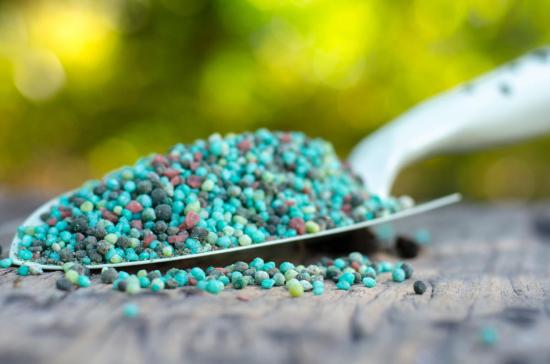
Simple superphosphate - sulfuric acid with apatite or phosphate rock. The fertilizer contains gypsum. It is not found in double superphosphate. Trees and berry crops need this chemical element. Its use helps accelerate the process of fruit set, increase frost resistance.
Phosphorus types of fertilizers are used:
- simple superphosphate - poured onto the surface of the earth during flowering. Ideal for flower crops;
- phosphate rock - added to acidified soils. Excellent performance when feeding vegetables and agricultural crops.Provides plants with phosphorus for a long time;
- double superphosphate is used for flower and berry crops. It is used in the fall to increase frost resistance.
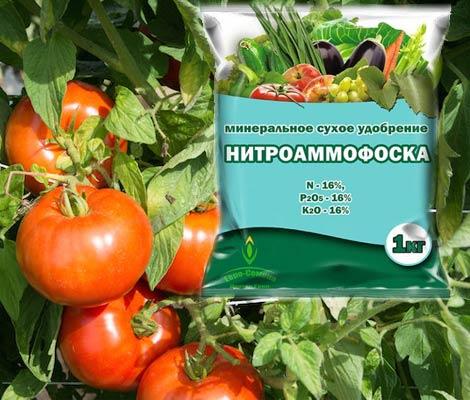
Microfertilizers
Mineral fertilizers supplemented with microelements. It is not uncommon for soil to have a low content of molybdenum, copper, and manganese. Treating seeds with mineral microfertilizers will help get rid of iron or zinc deficiency.
It is important to follow the standards indicated on the packaging.
The use of such products promotes the active development of the root system, increased immunity, and accelerated growth.
Microfertilizers are classified according to active substances:
- complex - a composition that contains several substances at the same time. They help increase productivity and resistance to pests;
- copper - introduced into wetlands, containing copper pyrite and vitriol;
- boric – help to activate the development of plants; the composition contains boric acid and borax;
- molybdenum - used to fertilize forest soils, the active substance is molybdic acid ammonium.
Advantages and disadvantages of use
The main feature distinguishing organic fertilizers from minerals – digestibility of nutrients. The fact is that organic ones take a very long time to decompose. This requires microorganisms that are found in the soil. These types of nutritional mixtures have a beneficial effect for a long time.
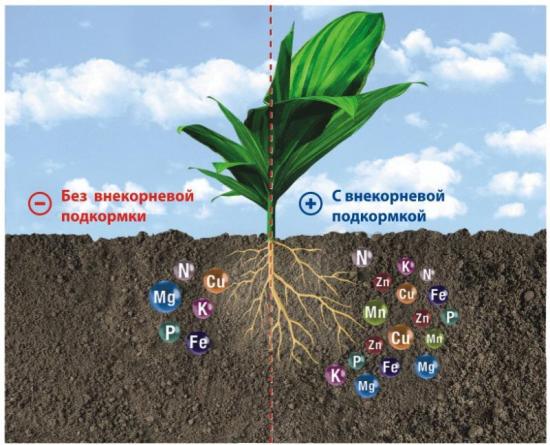
The useful elements found in mineral fertilizers do not need to be processed by soil microflora and are absorbed directly by plants. Therefore, the effectiveness of their use is quite rapid.Only substances in this category can cause harm by killing soil microorganisms that live in the soil and contribute to its fertility.
In addition, additives of this type are not completely absorbed by plants. Residues are often washed out of the soil and end up in the air or groundwater, sometimes contaminating them significantly.
Excess nitrogen compounds entering groundwater lead to the rapid development of various vegetation in reservoirs. This reduces the concentration of oxygen in the water, leading to the death of fish and waterlogging.
In addition, the use of mineral additives contributes to changes in acidity, compaction, soil erosion, accumulation of compounds that are unusual for plants, and the leaching of magnesium and calcium compounds negatively affects the amount of humus.
Be that as it may, these supplements are quite useful.
The advantages of using them are as follows:
- additives are reasonably priced and you need relatively few of them;
- noticeable increase in yield;
- help improve the taste and appearance of grown products;
- plants become more resistant to diseases and pests;
- the harvest is well stored;
- accessible to any users;
- do not create storage problems.

When using mineral supplements, you must remember that:
- better to apply organic fertilizers When it is not possible to purchase them, you can produce them yourself - composting;
- you need to carefully monitor the amount of nutrient mixtures introduced;
- it is necessary to alkalize the soil along with the application of fertilizer;
- Manufacturers' recommendations should be followed;
- try to use means that are less harmful.
It follows from this that an excessive amount of useful substances can harm not only plants, but also the earth, groundwater, and air, which is dangerous for people.
To avoid such troubles, you need to be responsible about the process of introducing them.
Mineral complexes
This group includes products that have a multilateral effect; they simultaneously contain two or more active components.
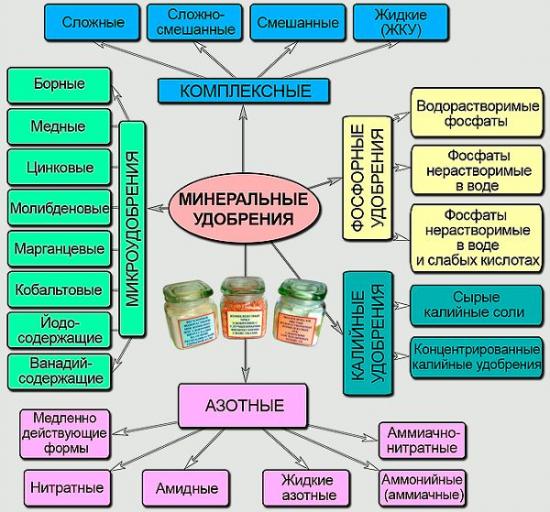
Complex mineral supplements can solve a variety of problems - increase productivity, destroy weeds and pests, and help improve the quality of flowers.
The group includes:
- ammophos, which is a nitrogen-phosphorus additive. Effective when applied to shrubs and various vegetable crops. Flowers respond very well to its use - they actively increase their green mass and begin to bloom wildly. bloom;
- Diammofosk – contains phosphorus, nitrogen, potassium, microelements. Fertilizing helps fight pests and is used for all types of plants.

The application of complex nutrient mixtures by workers of agricultural enterprises is carried out using fertilizer seeders, and summer residents scatter them manually in spring or autumn.
The following complex additives are usually added:
- nitroammophoska - suitable for application to different types of soil, under different plants. Alumina soils are fertilized in the fall, sandy soils in the spring, before plowing;
- nitrophoska – suitable for tomatoes, improves their taste, helps increase fruit size. Used in spring, during the growing season. Helps increase the resistance of cucumbers to diseases.
What are the advantages of using complex mineral fertilizers?
Nutrient mixtures have become widespread due to their positive qualities:
- high content of nutrients, low content or absence of sodium, chlorine and others;
- one granule contains all useful components at once;
- relatively low costs for application, transportation, storage;
- effective even with low moisture content;
- possible use for feeding crops sensitive to increased osmotic pressure inside the soil.
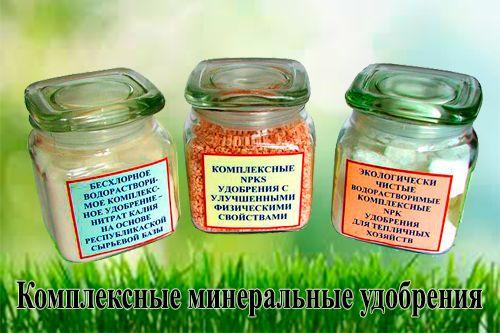
The use of fertilizers helps to obtain agricultural products of excellent quality, but we must not forget that everything is good in moderation.
After all, their excess can cause irreparable harm to the environment and people.
We suggest you look at an interesting article on how to understand the types of mineral fertilizers and choose the right ones for your garden:




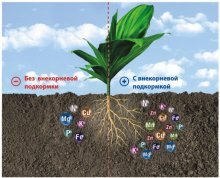
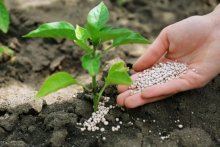

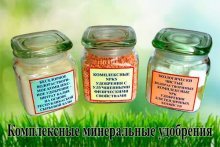
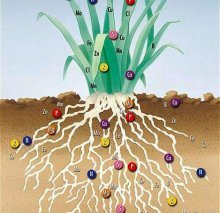
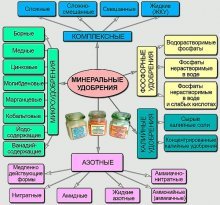
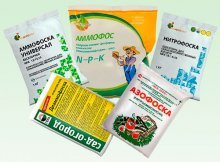
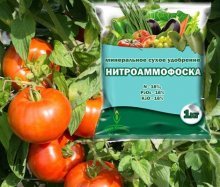
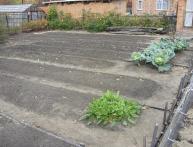
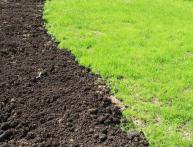


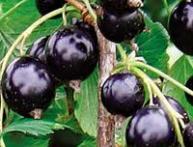
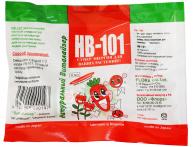
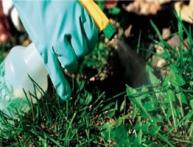
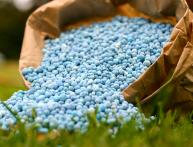
Comments
We still give preference to organic fertilizers. although we also use minerals, but not as actively as organics. Most likely due to low price and availability.
By the way, I wanted to add that we buy soil for seedlings and indoor flowers exclusively on an organic basis, and not with the addition of mineral and synthetic fertilizers. It is important!
It seems to me that complex mineral fertilizers will have the best effect on plants, but I think you shouldn’t get too carried away with fertilizer, because then the fruits will not be natural.